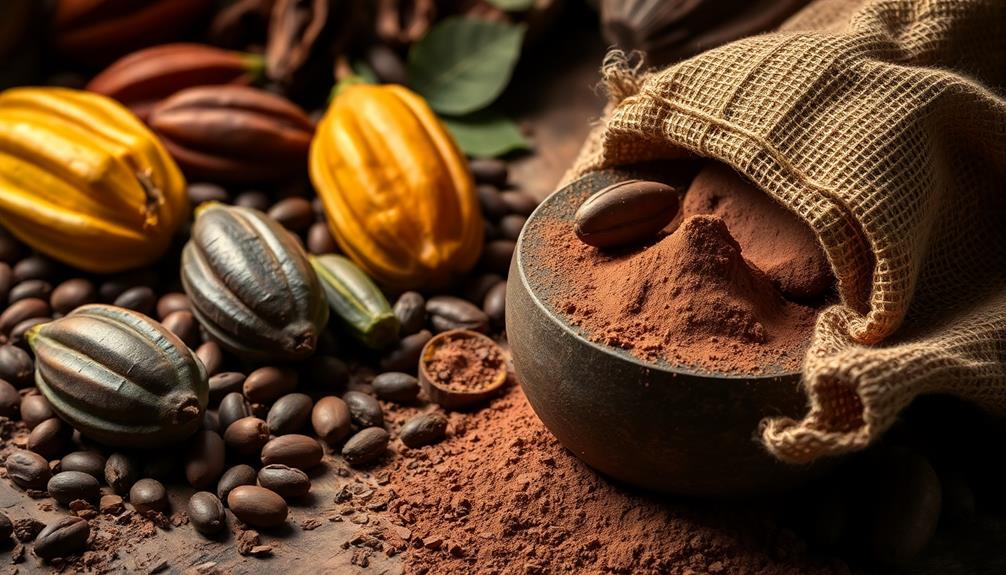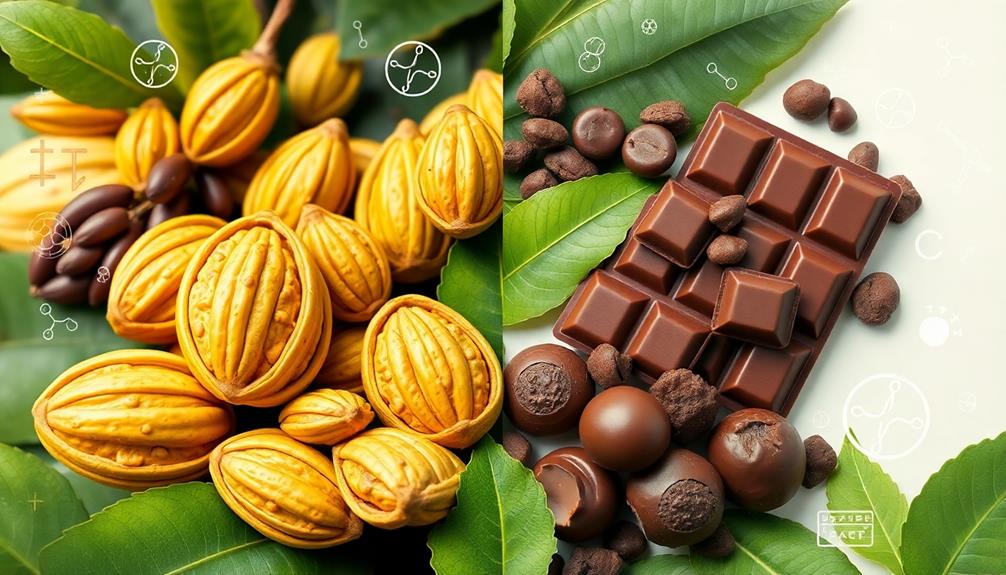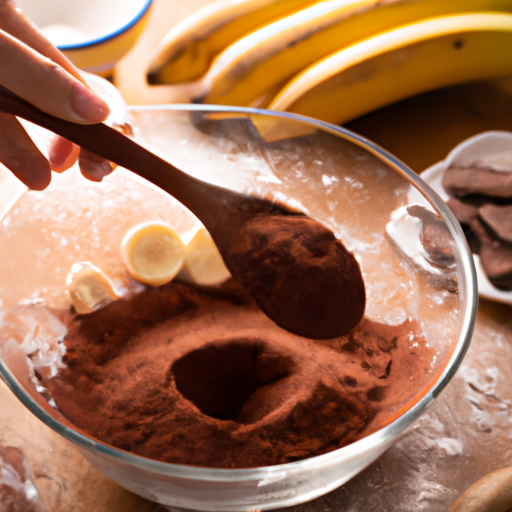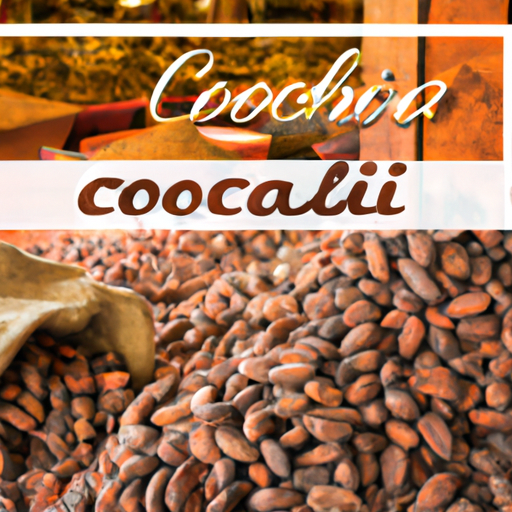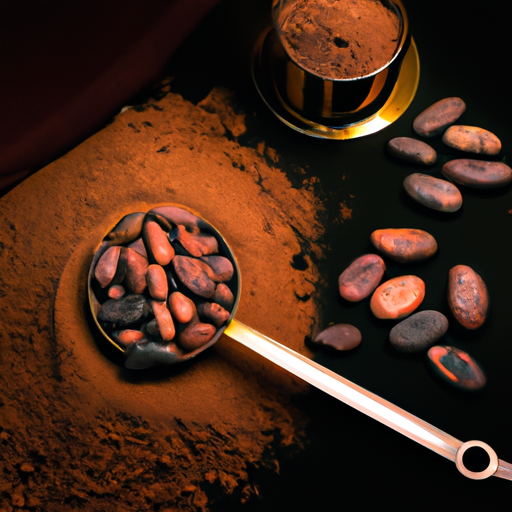If you're keen to explore raw cacao, you've got a delightful journey ahead. Originating from the Theobroma cacao tree, raw cacao remains minimally processed to maintain its rich nutrients and antioxidants. You'll discover it's packed with essential minerals like magnesium and iron, while its mood-enhancing compounds can elevate your spirits. Cacao thrives in tropical regions like Ecuador and Ghana, each offering unique flavor profiles. You can use cacao powder in baking or smoothies and even try brewing it for a rich beverage. Stick around to uncover more about the cacao process and how to incorporate it into your meals!
Key Takeaways
- Raw cacao originates from Theobroma cacao trees and is minimally processed to retain nutrients and antioxidants.
- Cacao is cultivated primarily in tropical regions known as the "cacao belt," with distinct flavor profiles based on environmental factors.
- Nutritional benefits include high antioxidants, essential minerals like magnesium and iron, and mood-enhancing compounds.
- Cacao products, such as powder, nibs, and butter, offer versatility for baking, topping desserts, and skincare.
- Brewing cacao involves specific ratios and methods, emphasizing water temperature and alternative milk for optimal flavor and texture.
Understanding Raw Cacao
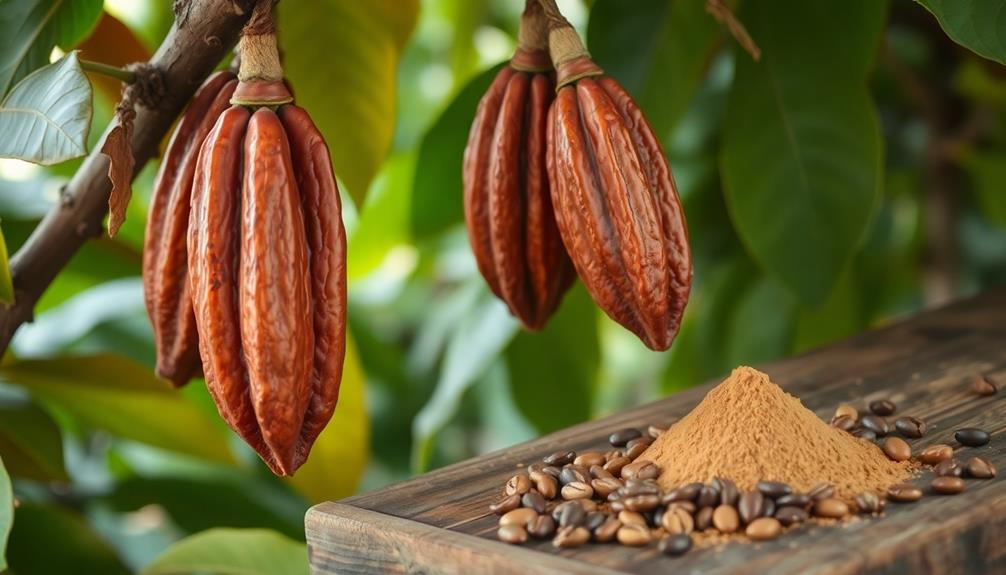
Understanding raw cacao starts with recognizing its origins. Cacao comes from the Theobroma cacao tree, and it's the basis for all chocolate products. Unlike processed cocoa, raw cacao is minimally processed, maintaining its nutritional benefits and high antioxidant content. The unique flavor profile of raw cacao is shaped by various factors, such as the plant variety, soil, and climate where the beans are grown.
Before reaching your kitchen, cacao undergoes fermentation and is unroasted to preserve its healthful properties. This careful process results in cacao powder, cacao nibs, and cacao butter, which are nutrient-dense compared to their cocoa counterparts.
While processed cocoa is often stripped of its beneficial compounds due to high-temperature roasting, raw cacao retains essential minerals like magnesium, iron, and calcium.
Incorporating raw cacao into your diet can enhance your overall wellness. It's not just a versatile ingredient for making chocolate treats; it's also recognized as a health food, thanks to mood-enhancing compounds like phenylethylamine and serotonin.
Cacao Cultivation and Regions
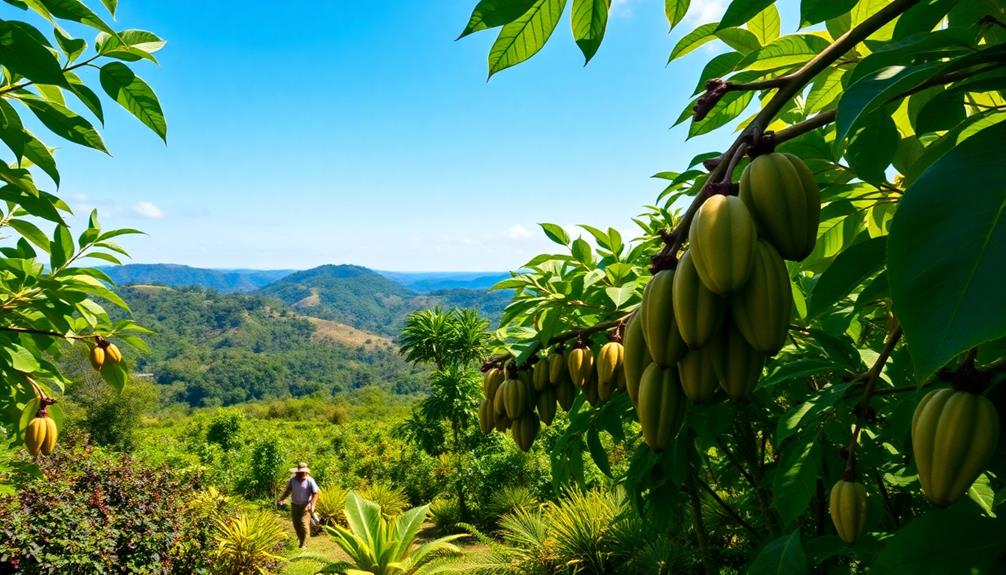
Cacao thrives in tropical regions known as the "cacao belt," with key countries like Ecuador, Ghana, and the Philippines leading production. The Philippines, in particular, introduced the criollo variety through Spanish colonizers, and Davao accounts for an impressive 81% of the nation's cacao production.
Ideal cacao cultivation conditions include an average rainfall of about 2,000mm and humidity levels around 75%. These factors contribute considerably to the development of unique flavor profiles. The environmental conditions, including soil composition and local climate, create regional variations in taste, making each cacao-growing region distinct.
Here's a snapshot of some cacao-growing regions:
| Region | Notable Features |
|---|---|
| Davao | 81% of Philippines' cacao production |
| Batangas | Rich soil, proximity to tropical fruits |
| Cebu | Unique flavor profiles, diverse climate |
In these regions, cacao trees flourish, producing beans that reflect the local environment. Understanding the cultivation process and these specific areas enhances your appreciation for the raw cacao you enjoy.
Nutritional Benefits of Cacao

Raw cacao boasts a wealth of nutritional benefits that can enhance your overall health. When you incorporate cacao into your diet, you're tapping into a powerful source of antioxidants, particularly flavanols. These compounds can improve your cardiovascular system by enhancing blood flow and lowering blood pressure.
Furthermore, raw cacao is rich in essential minerals like magnesium, iron, and zinc, with magnesium playing an essential role in over 300 biochemical reactions in your body.
The health benefits of cacao extend beyond physical wellness; its mood-enhancing compounds, such as phenylethylamine and serotonin, can help alleviate stress and lift your spirits. Additionally, cacao is high in dietary fiber, which supports digestive health and promotes a feeling of fullness, aiding in weight management.
It's important to note that raw cacao retains more nutrients and antioxidants compared to processed cocoa, making it a healthier choice for culinary applications. By choosing raw cacao, you're not only indulging in a delicious treat but also investing in your overall health with its rich nutritional content.
Cacao Products and Their Uses
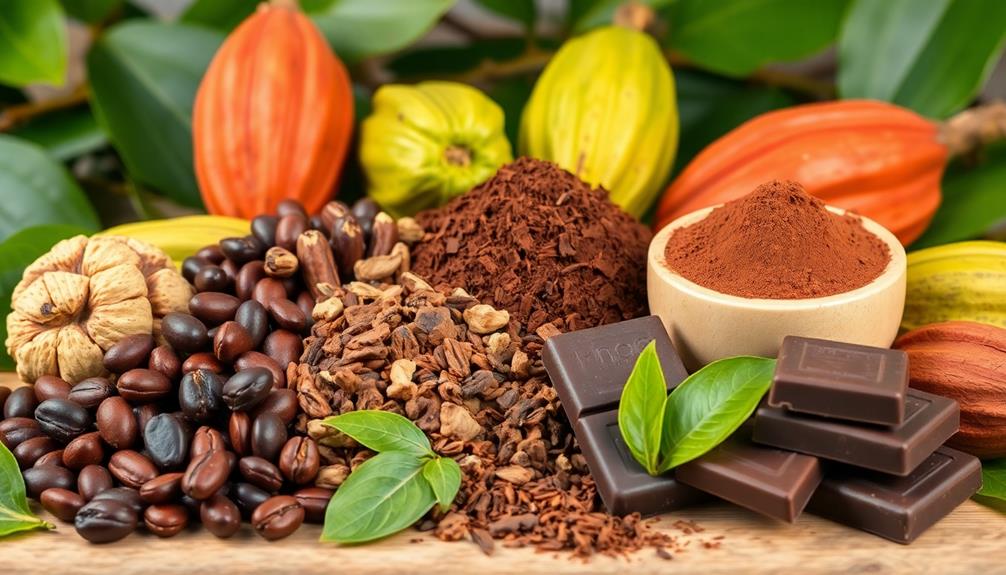
Exploring the diverse world of cacao products reveals a treasure trove of culinary possibilities. Each product showcases unique flavors and health benefits, making them indispensable in your kitchen.
| Cacao Product | Uses | Benefits |
|---|---|---|
| Cacao Powder | Baking, smoothies, and desserts | Nutrient-dense, rich in antioxidants |
| Cacao Nibs | Toppings for desserts and granola | Crunchy texture, retains chocolate flavor |
| Cacao Butter | Homemade chocolates and skincare | Moisturizing, stable fat, rich in antioxidants |
Cacao powder, derived from fermented and unroasted cacao beans, is perfect for health-conscious recipes, while cacao nibs add a delightful crunch to smoothies and snacks. If you're looking to create authentic hot chocolate, consider using cacao tablea, made from roasted cacao beans. Cacao butter, extracted through cold-pressing, serves as a base for both culinary delights and cosmetic products due to its moisturizing properties. You can even combine these cacao products with various sweeteners to enhance flavors. Embrace the versatility of cacao and elevate your dishes with its rich, chocolate flavor!
Brewing and Preparing Cacao
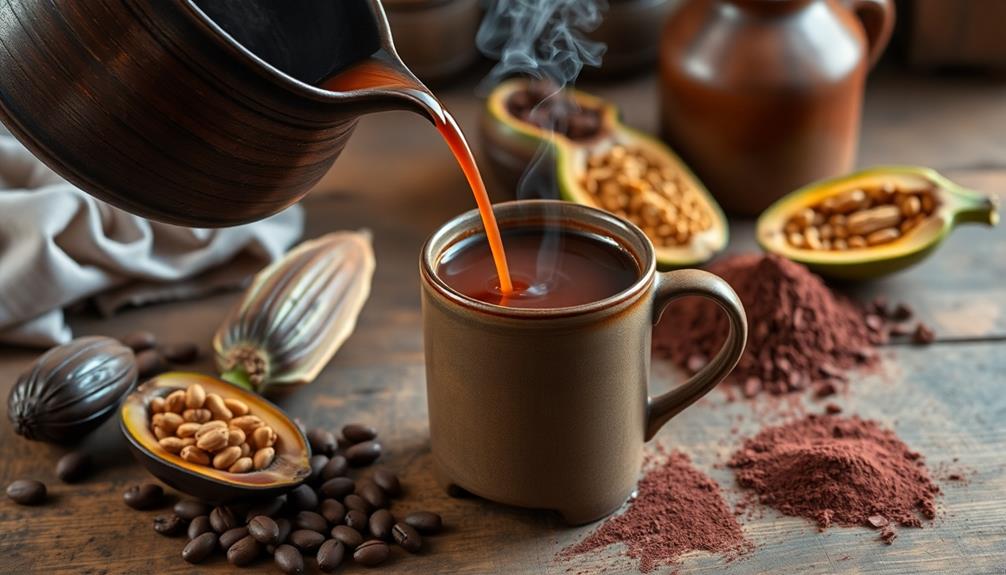
When it comes to brewing and preparing cacao, you'll discover a rich and flavorful experience that sets it apart from regular cocoa. Unlike processed cocoa powder, brewing cacao involves using whole roasted cacao beans that you coarsely grind.
For hot brewing, use 2-4 heaping tablespoons of cacao per cup and brew for 4-5 minutes to prevent astringency. If you prefer cold brewing, mix ½ to ¾ cup of cacao per quart and let it steep in sunlight for 24-48 hours.
To achieve the smoothest liquid consistency, heat your water to around 80°C and gradually incorporate it with the cacao. Remember to avoid dairy milk, which can block the beneficial effects of cacao; instead, opt for nut milk to enhance creaminess.
Adjusting the liquid-to-cacao ratio allows for customization based on your desired thickness. For 40g of cacao, aim for 100-140 ml of water, depending on whether you want a thick, medium, or thin consistency.
Enjoy your delicious hot chocolate or chilled beverage, knowing you've embraced the full essence of cacao!
Frequently Asked Questions
How to Process Cocoa Beans Into Powder Step by Step?
To process cocoa beans into powder, you'll harvest ripe pods, ferment seeds, dry them, roast, crack the shells, grind the nibs into liquor, then press to separate cocoa butter and cake, creating powder.
How to Grind Cacao Beans Into Powder?
To grind cacao beans into powder, roast them to enhance flavor, then cool. Use a burr grinder or blender for fine consistency. Grind in small batches and let the powder rest to develop its flavor.
Is It Okay to Drink Cacao Every Day?
Yes, it's okay to drink cacao every day! It's packed with antioxidants and minerals that support your heart and mood. Just watch your intake to avoid any digestive discomfort or overstimulation. Enjoy it responsibly!
How Many Cacao Beans Are Needed to Make One Pound of Chocolate?
In order to make one pound of chocolate, you'll need around 400 cacao beans. This number can vary based on the cacao variety and processing methods, so it's crucial to take into account these factors when exploring chocolate production.
Conclusion
As you explore the world of raw cacao, think of it as a journey through a lush jungle, where each step uncovers hidden treasures. Just like a skilled explorer uncovers the rich flavors and nutritional benefits of cacao, you'll discover how this superfood can transform your daily routine. Whether you're sipping a warm brew or adding cacao powder to your favorite recipes, you're not just indulging; you're nourishing your body with nature's finest. Embrace the adventure!

